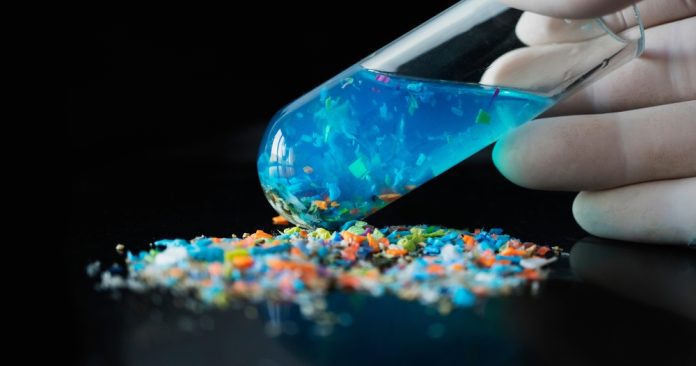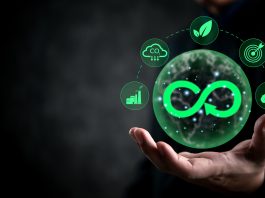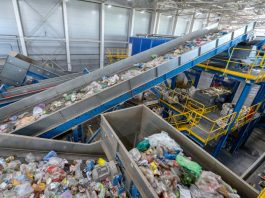Microplastic pollution has emerged as a significant environmental challenge, with synthetic particles infiltrating marine ecosystems and affecting biodiversity.
Among these pollutants, PET-based glitter microplastics are now under scrutiny for their unexpected role in altering natural biomineralisation processes.
A recent study conducted by Trinity College Dublin’s School of Natural Sciences has uncovered concerning interactions between PET glitter microplastics and mineral formation in marine environments.
The findings suggest that these microplastics actively influence calcium carbonate (CaCO3) crystallisation, potentially impacting marine organisms that depend on stable biomineralisation.
Understanding PET-based glitter and its environmental persistence
Glitter is widely used across multiple industries, from cosmetics and fashion to automotive applications and arts and crafts.
Composed primarily of polyethene terephthalate (PET), glitter’s reflective qualities stem from its multi-layered structure, which includes thin metallic coatings and colour dyes.
While this structure enhances durability, it also makes glitter highly resistant to degradation, allowing it to persist in aquatic environments long after disposal.
Due to its small size and lightweight nature, glitter microplastics often bypass conventional waste management systems, making their way into the oceans.
Once in seawater, these particles interact with natural processes, affecting marine ecosystems in ways previously underestimated.
How glitter microplastics influence marine mineralisation
The Trinity College Dublin research team sought to understand how PET glitter microplastics interact with seawater chemistry, particularly their role in calcium carbonate (CaCO3) mineralisation.
By replicating oceanic conditions in a controlled laboratory setting, scientists analysed six different types of PET glitter to assess their impact on Ca-Mg carbonate crystal formation.
Using advanced analytical techniques such as scanning electron microscopy and infrared spectroscopy, researchers observed that PET glitter microplastic pollution provides ideal surfaces for CaCO3 crystallisation.
This process occurs rapidly – sometimes within minutes – indicating that these microplastics could serve as artificial templates for biomineral formation.
This phenomenon could have far-reaching consequences for marine calcifying organisms, including corals, molluscs, and plankton, which rely on stable CaCO3 structures to build their skeletons and shells.
Accelerated degradation and increased microplastic spread
In addition to promoting mineral formation, the study revealed another alarming consequence of PET glitter’s interactions with seawater.
The crystallisation process causes physical degradation of the glitter particles, leading to fragmentation and the release of smaller microplastic and nanoplastic fragments into the environment.
These newly formed particles, measuring as small as 0.001 mm, can be more easily ingested by marine organisms, potentially infiltrating food chains and disrupting biogeochemical cycles.
The breakdown of glitter microplastics not only contributes to increasing microplastic pollution concentrations in marine environments but also raises concerns about the long-term ecological impact.
With each cycle of mineralisation and degradation, PET microplastics may become even more bioavailable, exacerbating pollution levels and posing a greater threat to marine biodiversity.
Implications for environmental policy and future research
The study’s findings highlight the urgency of addressing microplastic pollution through stricter regulations and improved waste management strategies.
Understanding how PET glitter and other synthetic materials interact with natural oceanic processes is crucial for developing effective mitigation approaches.
The research underscores the need for further investigation into how microplastic pollution influences biomineralisation and the broader ecological consequences of their accumulation in marine ecosystems.
By shedding light on the hidden dangers of PET-based glitter microplastics, this research serves as a call to action for governments, industries, and individuals to rethink their plastic consumption habits and take steps toward a cleaner, healthier marine environment.









